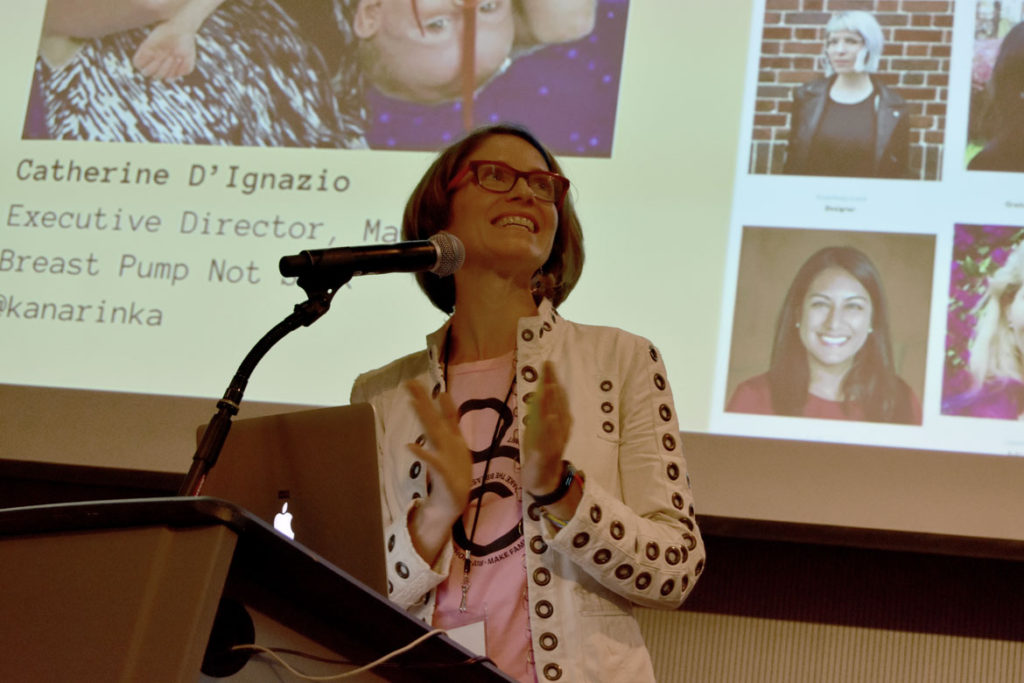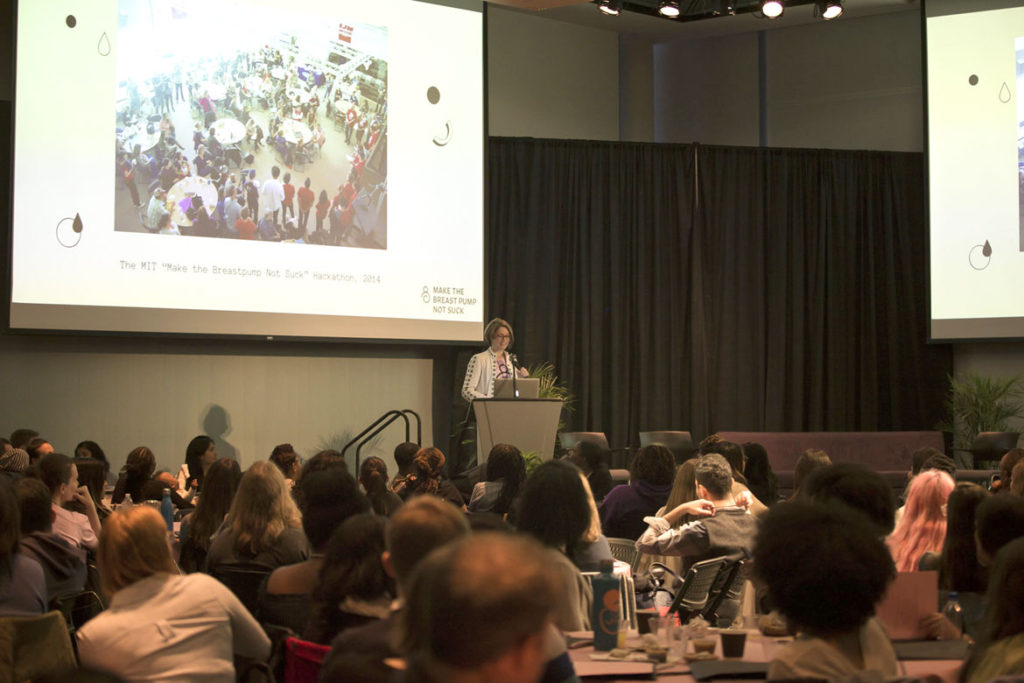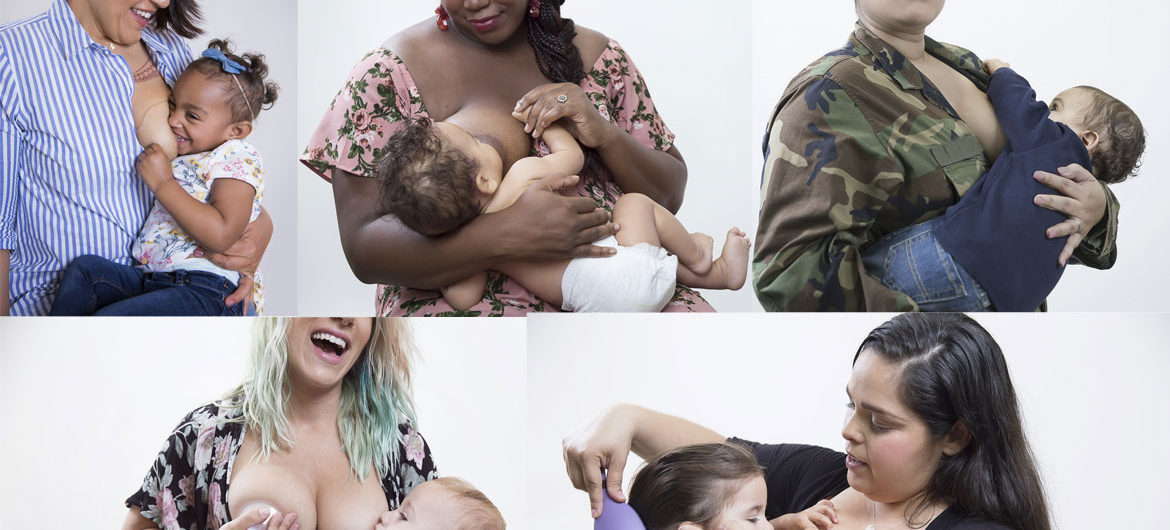The idea for the Make The Breast Pump Not Suck Hackathon originated with a bad day in a bathroom at Massachusetts Institute of Technology’s Media Lab. After the birth of her third child, Catherine D’Ignazio was doing graduate work at the Cambridge school. But the open and airy building, just completed in 2009, offered little privacy for nursing moms.
“In a beautiful, award-winning building with transparent partitions and wonderful sight-lines everywhere,” D’Ignazio said, “where does a breastfeeding mother pump?”
She found herself trying to pump milk for her young daughter in a bathroom and, wrestling with the awkwardness of standard breast pumps, she ended up spilling her milk on the floor, wasting it.
“Why do the futures that are being invented right here, why do they not include any babies or breastfeeding women?” asked D’Ignazio, a research affiliate at the MIT Media Lab and assistant professor of data visualization at Emerson College in Boston.
That was the question sparked her to co-found the hackathon, first held at MIT in 2014. “We learned from dairy scientists that cows have much more advanced pumping machines than women,” she said in her opening speech at the second “breastfeeding festival,” which was held in the MIT Media Lab from April 27 to 29. It included a hackathon, a policy summit, a product expo, a book launch, and art exhibition.

Help Wonderland keep producing our great coverage of local arts, cultures and activisms (and our great festivals) by contributing to Wonderland on Patreon. And sign up for our free, weekly newsletter so that you don’t miss any of our reporting.
At the April event, prizes were awarded for proposals for a sanctuary live-in community in the Mississippi Delta serving housing insecure pregnant and postpartum women, traditional regalia for Pueblo women modified to be more breastfeeding friendly so that mothers can participate more freely in Pueblo traditions, a push for birth and breastfeeding equity in Mississippi communities of color, a plan for women of color to self-advocate for breastfeeding, and an effort to fight bias in the healthcare system.
Addition prizes went to reusable and sustainable lactating pads, a health education program to increase breastfeeding awareness among students at historically black colleges and universities, breastfeeding solutions for visually impaired parents, a lactation kit for disaster situations, an app promoting postpartum health, a pop-up shelf to increase comfort for mothers pumping in public spaces, and a virtual reality app that would transform pumping pods, toilets and work environments into a virtual nursery decorated with pictures, videos and sounds of their babies to increase moms’ oxytocin levels and help letdown.

In the years between the two hackathons, innovations proposed at the first one have “come to market,” D’Ignazio said in her opening speech at the April hackathon. “We’re really staring to see moves in this space. … Two companies told us they released a new pump based on the hackathon.”
But she said new breast pump designs were retailing from between $359 and $939, making them available “mostly to white women,” people with knowledge jobs and private offices. “We cannot innovate for the 1 percent.”
“Good design and innovation practice doesn’t leave out 99 percent of the people,” D’Ignazio said. “And it doesn’t leave out the people who are facing the most barriers to breastfeeding.”
Meanwhile, continued lack of support for breastfeeding mothers, lack of good spaces to breastfeed, and lack of paid leave from work for parents, D’Ignazio said, results in people “trying to breastfeed amidst a very hostile environment for breastfeeding.”
“Breastfeeding is actually a luxury good,” D’Ignazio said. “If you have to return to work 10 days after giving birth, your choice is not breast or bottle,” it’s breast or no paycheck and potential homelessness.
D’Ignazio said, “Until we fix that on the policy front, there will be no meaningful change in the landscape of what mothers are up against.” Which was why the April hackathon included a policy summit and increased efforts toward “racial and socioeconomic equity,” to include LGBTQ folks, low-wage workers, and parents of color.
“Who gets to innovate? Who gets to make the future,” D’Ignazio asked. “In the architecture of this building, my future was erased. Good design is not about erasure, it’s about liberation.”
Help Wonderland keep producing our great coverage of local arts, cultures and activisms (and our great festivals) by contributing to Wonderland on Patreon. And sign up for our free, weekly newsletter so that you don’t miss any of our reporting.

